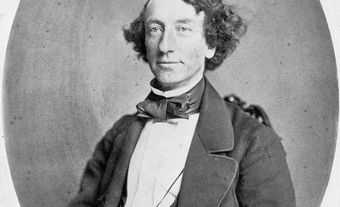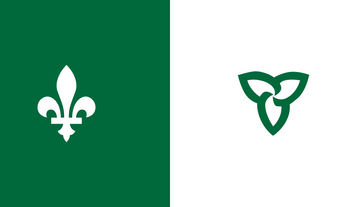The territorial limit between Québec and Newfoundland in the Labrador peninsula, at over 3500 km long, is the longest interprovincial boundary. It has not yet been surveyed and marked on the ground. A dispute concerning the ownership of Labrador arose in 1902 when the Québec government protested Newfoundland's issuing a timber licence on the Churchill River.
Two years later Québec asked Ottawa to submit the controversy to the Judicial Committee of the Privy Council in London. This reference to an outside impartial body was appropriate, since Canada and Newfoundland were separate members of the British Empire and neither could have settled the issue through its own courts. Only Canada and Newfoundland were admitted as parties to the case, and Québec had no direct representation.
The dispute dragged on, and in 1922 Canada and Newfoundland agreed to ask the Privy Council to decide only "the location and definition of the boundary as between Canada and Newfoundland in the Labrador Peninsula under the statutes, orders-in-council and proclamations." The panel of 5 judges was confined to this question; it could not create a new boundary or suggest a territorial compromise. The main point in the case was the meaning of "coast," for that was how Labrador was legally described.
Newfoundland traced its claim of ownership to the commission issued to Governor Thomas Graves in 1763, which extended his jurisdiction to the "Coasts of Labrador." Canada argued that a royal proclamation later that year merely placed the territory under the governor's "care and inspection" for fishing purposes.
In 1774, it was pointed out, Labrador was transferred by statute to Québec, but in 1809 it was reannexed to Newfoundland; in 1825 the coast of Labrador west of a line extending due north from the bay of Blanc-Sablon to the 52nd parallel of latitude was once again restored to Lower Canada [Québec].
The judicial committee refused to accept Canada's contention that "coast" meant a strip of land one mile (1.6 km) wide along the seashore. It found that the evidence supported Newfoundland's inland claim as far as the watershed line or height of land. The court's decision in March 1927 settled the boundary in its present location.
When Newfoundland joined Confederation in 1949, its boundary in Labrador was confirmed in the Terms of Union (now the Newfoundland Act), enshrined in the Constitution Act, 1982. In 1971, the province of Québec's Commission Studying the Territorial Integrity of Québec decided that the case against the 1927 boundary was not worth pursuing; by 1987, although the province did not consider the issue to be settled, the dispute appeared to be dormant.

 Share on Facebook
Share on Facebook Share on X
Share on X Share by Email
Share by Email Share on Google Classroom
Share on Google Classroom


